Romanesco Broccoli Growing Guide
Romanesco is an interesting looking cruciferous vegetable with lime colored spiral florets.
It’s part of the brassica vegetable family which includes broccoli, cauliflower, cabbage and kale.
It has a sweet, nutty flavor with a crunchy texture and makes an attractive addition to recipes that require cauliflower.
This post about growing Romanesco contains affiliate links. Please read the disclosure for more info.
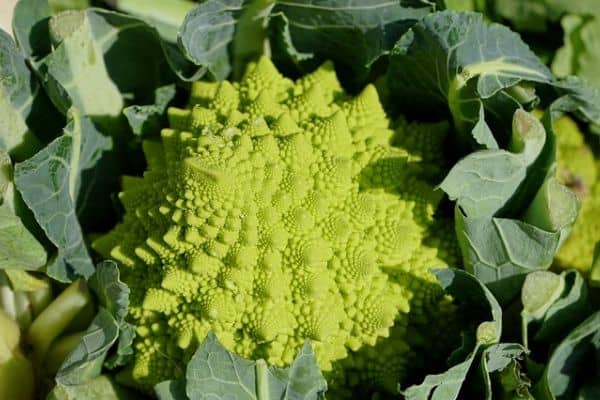
HOW TO GROW ROMANESCO BROCCOLI
Romanesco (Brassica oleracea), also called Roman cauliflower or Romanesco broccoli, is an attractive heirloom vegetable that has been grown in Italy since the 16th century. [1]
It’s sometimes confused with broccoflower, which is a hybrid of broccoli and cauliflower. [2]
Romanesco is a cool season vegetable and has similar growing requirements to cauliflower.

Planting Romanesco
Romanesco seeds can be planted in late summer to mid-fall for a winter harvest.
Plant the seeds ½ inch (1 cm) deep in seed trays and keep them indoors or in a greenhouse until they’re about 4 to 6 inches (10 to 15 cm) tall.
Harden off the seedlings by placing them in a sheltered spot outdoors for a week before planting them in the vegie patch.
Romanesco plants spread out a lot so they need plenty of space in between plants and they grow best in full sun.
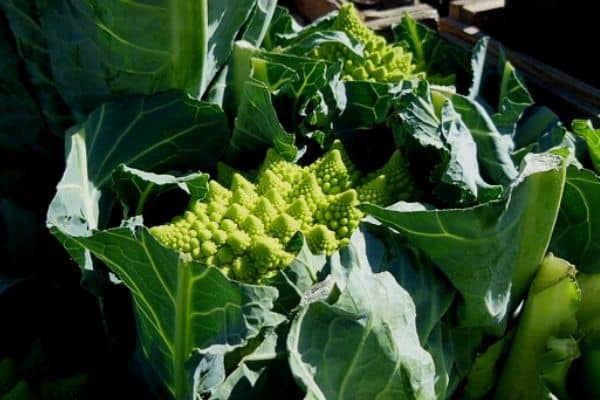
Prepare the soil by adding some organic matter before planting your seedlings.
Space the plants out 2 feet (60 cm) apart. This seems like a lot of space, but the plants will quickly spread out.
If they’re planted too close together, you’ll only get small, very compact heads.
Romanesco Care
Romanesco plants need regular watering, especially in warm, dry weather.
A layer of mulch around the plants will help the soil to retain moisture and keep the weeds away.
Romanesco is a heavy feeder and will benefit from a high nitrogen fertilizer once the plants become established.
If the plants are exposed to sudden hot temperatures, they may bolt to seed
Romanesco is usually ready to harvest about 75 to 100 days after planting.
You can harvest the entire head by cutting it at the base with a sharp knife or you can cut off the individual florets as you need them.
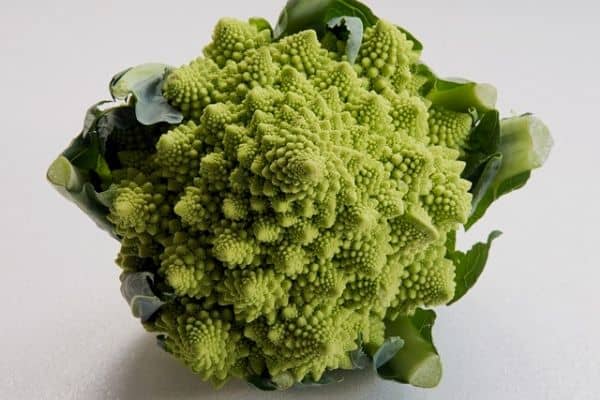
Pests and Diseases
Romanesco seedlings are susceptible to slugs and snails so
you may need to use pet friendly slug pellets or set up a beer trap in the
garden to protect your seedlings.
As the plants mature, they can also be attacked by white butterflies, caterpillars, flea beetles and aphids.
Fungal overgrowth can be a problem too, so it’s a good idea to water the base of the plants to keep the leaves dry.
How to cook with Romanesco
Romanesco broccoli has a nutty, slightly sweet taste and it can be lightly steamed, blanched in boiling water or sliced finely to use in a salad.
You can use Romanesco in just about any recipe that requires broccoli or cauliflower.
It makes an interesting addition to stir fries, cauliflower cheese bakes and it pairs well with other vegetables.
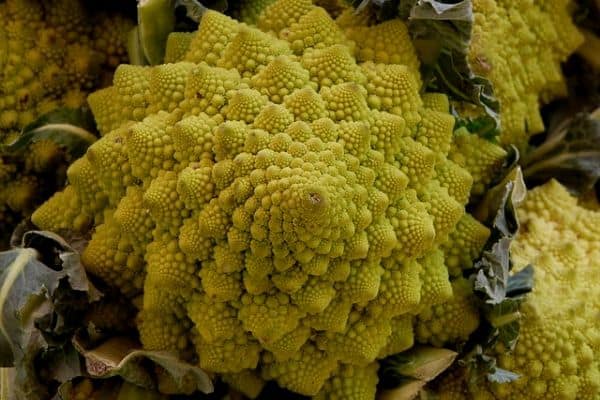
So there are my tips for growing Romanesco broccoli in your vegetable garden.
If you’re looking for a unique and attractive cruciferous vegetable to plant in your garden, you can’t go past Romanesco.
It does require a lot of space in the garden and takes a while to mature, but you can plant some fast growing vegies like lettuce or baby spinach in between the plants to make use of the space while the plants are young.
RELATED ARTICLES
- 8 Climbing Vegetables
- 10 Fast Growing Salad Vegetables
- 12 Ornamental Vegetable Plants
- 15 Frost Tolerant Vegetable Plants
- 10 Cruciferous Vegetables To Grow In Your Garden
Do you have any questions about growing Romanesco broccoli? Let me know in the comments below.
Are you on Pinterest? I have boards dedicated to Vegetable Gardening and Gardening Tips that you may find helpful. You can also find me on Facebook.

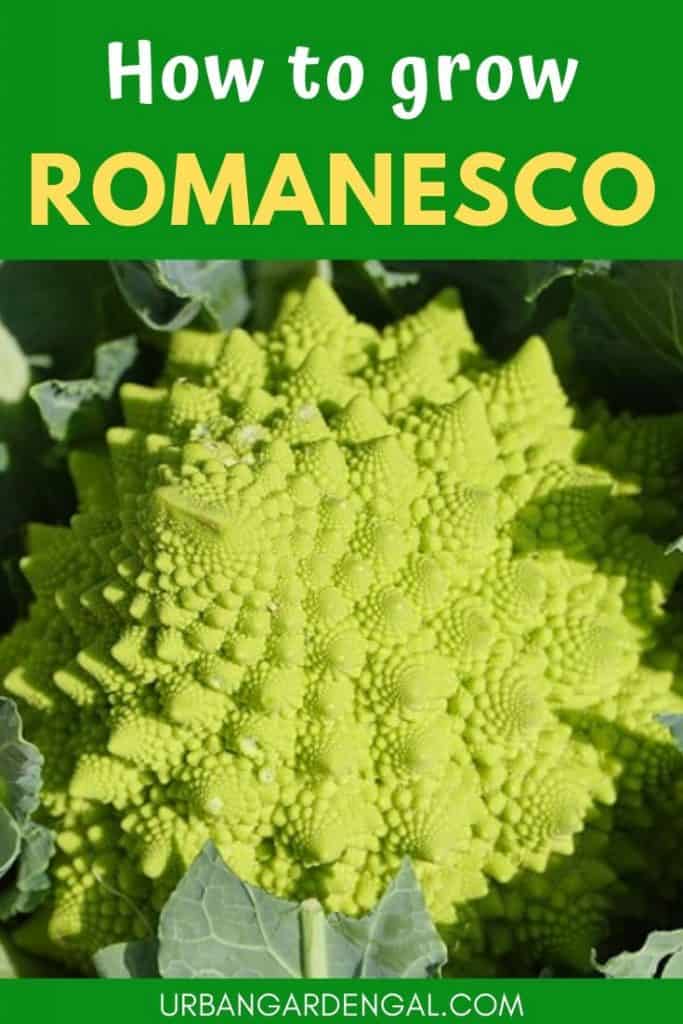
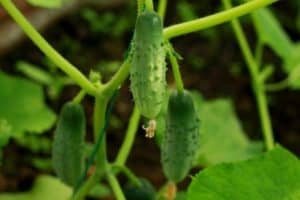
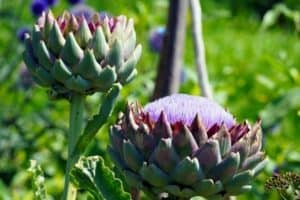
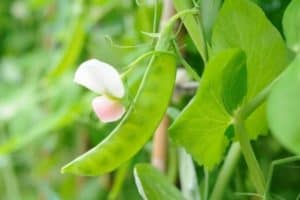

Romanesco broccoli is such a cool vegetable! I love the spirals. I definitely want to try growing romanesco in my new vegetable garden. I’ve had some success with growing cauliflower in the past so I hope I can grow lots of these beautiful vegetables.
I have grown heirloom Romanesco, which had heads over a foot across that I harvested by cutting the outer spears first and letting the inner ones grow. But now all I see for sale is the modern hybrids, like ‘Veronica’ that have small heads, up to maybe 8 or 9 inches across. Do you know a source for the plants that make large heads?